SG517 Straw Bale Gardening (Part 3 & Wrap Up)

Hi there, Listeners! Leave me a review in iTunes and I’ll thank you with a shout out on the next Still Growing… podcast! [View it in iTunes and then go to Ratings & Reviews]
Interested in starting a Straw Bale Garden this year?
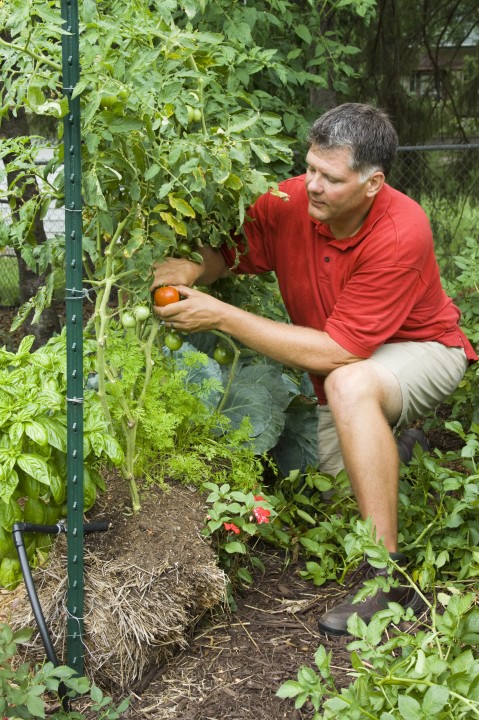 In this week’s episode (SG517), I continue my chat with Joel Karsten about Straw Bale Gardening in warmer climates, direct sowing in Straw Bale Gardens, growing vegetables in Straw Bale Gardens, and the inspiration other gardeners have discovered through Straw Bale Gardening.
In this week’s episode (SG517), I continue my chat with Joel Karsten about Straw Bale Gardening in warmer climates, direct sowing in Straw Bale Gardens, growing vegetables in Straw Bale Gardens, and the inspiration other gardeners have discovered through Straw Bale Gardening.
All this and more on the wrap-up of our Straw Bale Gardening interview with Joel Karsten.
In this Episode:
- Straw Bale Gardening in warmer climates (6:00)
“When we talk about warmer climates – Arizona, Nevada, Texas:
Believe it or not, they don’t have the greatest soil there.
A lot of their soil is clay based or acidic or too alkaline – plus rocky, sandy – not really conducive and productive soils in those parts of the world.
So Straw Bale Gardening is a really great alternative.”
– Joel Karsten, Straw Bale Gardens
“In truly desert climates, they get plenty of sun – that’s never been their issue.
We talk more with them about using the trellis system that we’ve built to help support shade cloth during part of the season. Many of their gardens will burn up because it doesn’t have a nice covering of shade cloth.
Even in the United Arab Emirates, I know people that are actually Straw Bale Gardening. They feed their camels grain and grass and they have bales of fodder and bedding materials.
It’s interesting that some of the material in different parts of the world aren’t the same as ours – oat straw and wheat straw – but it still works.
You need tightly baled organic material that will decompose rapidly – that will work for this process”
– Joel Karsten, Straw Bale Gardens
- The Advantages of Straw Bale Garden (10:00)
“You condition, you plant and you harvest. And, if you have an automatic water system set up, you don’t even need to get your garden hose.
You don’t have to go through a learning curve, and you don’t have to rotate crops.”
-Joel Karsten, Straw Bale Gardens
- Joel’s DIY Tomato Cage (13:00)
“The way they work is you buy this concrete reinforcing wire. It looks just like wire fencing and the squares are real big – 5 inch by 5 inch squares. I buy a long roll of it and I cut it up in sections. You basically spiral it up into a cylinder and put zip ties to hold it in place.
These things just last forever. If you run out of storage space, you remove the zip ties and flatten them on the ground and then you put them back together in the spring.”
– Joel Karsten, Straw Bale Gardens
- Joel’s Tip for Storing Basil (16:00)
“I always say when I go to the grocery store in the winter – you literally pay $6-$7 for these little clamshells with two sprigs of basil – I come home and I always tell my wife how all summer I’m a millionaire when it comes to basil because I have so much of it”
– Joel Karsten, Straw Bale Gardens
- Direct Sowing with Straw Bale Gardening (18:46)
“Now people’s first instinct is to take their shovel and take a few shovelfuls of soil from their garden and put it on top of their bale and that’s a BIG no-no! We don’t do that.
What we do is we buy a bag of sterile planting mix and usually what I suggest is they buy a soils planting mix. That way you don’t have any possibilities of introducing any kind of pathogen or fungus – anything like that. Then you frost the cake: you put just an inch or an inch and a half on top of the bale – you sort of pack it down – and make a smooth surface. Then, you put your seeds right in that seed bed.”
– Joel Karsten, Straw Bale Gardens
- Shorten Days to Maturity (22:00)
“Growing in a Straw Bale – with the earlier start and fast growth – it shortens the days to maturity.
If you look at a tomato plant, it tells you this is 100 days to maturity. Usually I tell people to knock off about 10% – so 90 days.
So, if you planted it two weeks early, and now you only have 90 days to maturity, you’re saving 10 days plus another 14 days of planting earlier.
Essentially, you’re getting tomatoes 23 – 26 days earlier than you normally would.”
-Joel Karsten, Straw Bale Gardens
- Vegetable Growing in Straw Bales (25:00)
- Some things that do not like/need to grow in Straw Bales (47:00)
- What to do after the Harvest (49:00)
- Some Classic First-time Edible Gardener Mistakes (52:00)
- Joel’s picks for Ornamental Edibles (53:00)
- Viola! Gladiola Straw Bale Gardening (56:18)
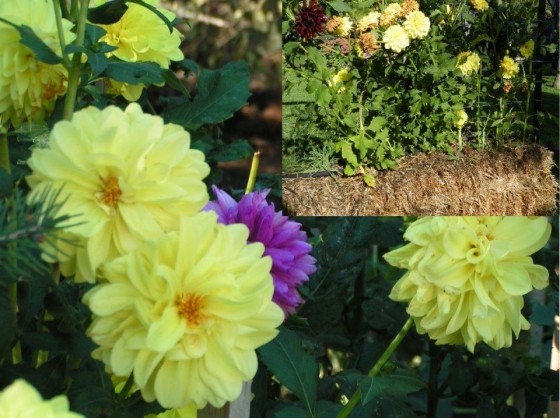
Use a bale or two in your Straw Bale Garden to grow summer bulbs. Plant them full of dahlia, gladiolus, caladium, calla, canna, tuberous begonia, butterfly ginger or others. As the stems shoot up out of the bales cut the flowers and display them indoors in your best vase. Let the leaves of the bulbs continue to grow until fall in the bale. At the end of the season, you can simply cut the strings on the bales, and pick up your bulbs that have now doubled or tripled in size. Store them over winter and replant again in the spring. An average bale can hold 100 gladiolus bulbs. Using a bale as the “nursery” for your bulbs means NO DIGGING in the fall, less disease, earlier flowers, fewer insects, and best of all NO DIGGING.
- Joel’s trip to France (59:00)
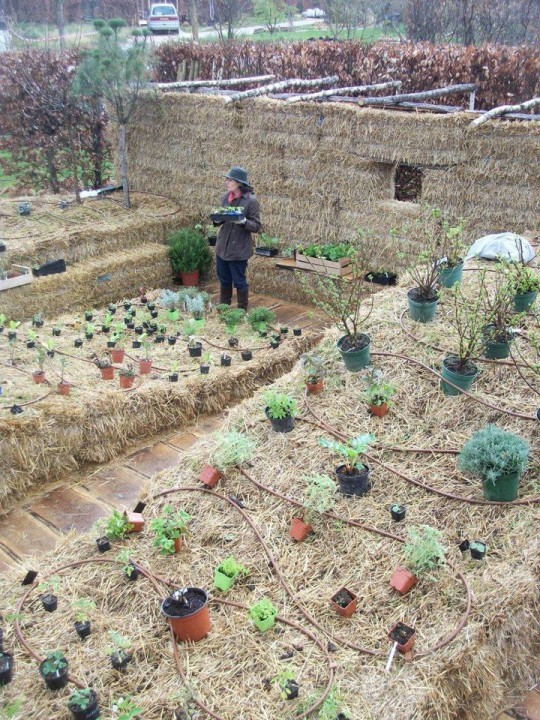
Straw Bale Gardening in France. The garden is an entry into a very prestigious garden tour with 20 gardens around Paris, that runs for six months. Make sure to hit the translate button in the upper right corner unless you are fluent in French. http://www.un-paysage-a-gouter.weonea.com/blog/22607/
- What Seasoned Straw Bale Gardeners Know (1:07:00)
- Joel’s own Straw Bale Garden (1:09:00)
Connect with Joel:
Links Mentioned:
- The Garden Media Group’s 2014 Garden Trend Report
- Concrete-Reinforcing Mesh at Home Depot
- Ina Garten’s Roasted Tomato Basil Soup – Joels tip: Cut your tomatoes in half and roast them on a jelly roll pan lined with tinfoil on the grill – 350 degrees for just 45 minutes and they are perfectly roasted and just the right amount of crustiness.

Hi there, Listeners! Leave me a review in iTunes and I’ll thank you with a shout out on the next Still Growing… podcast! [View it in iTunes and then go to Ratings & Reviews]
Still growing...


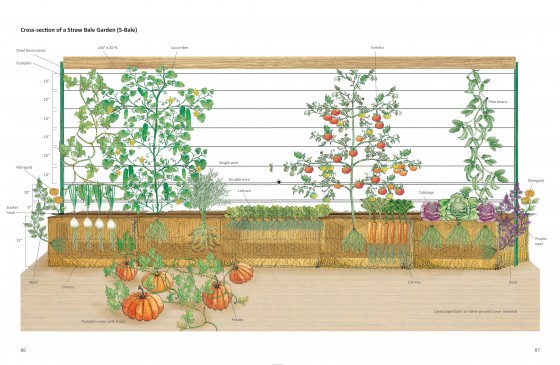
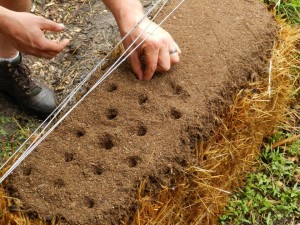
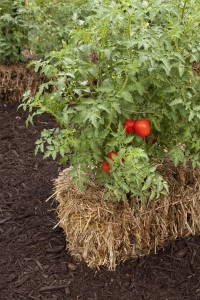
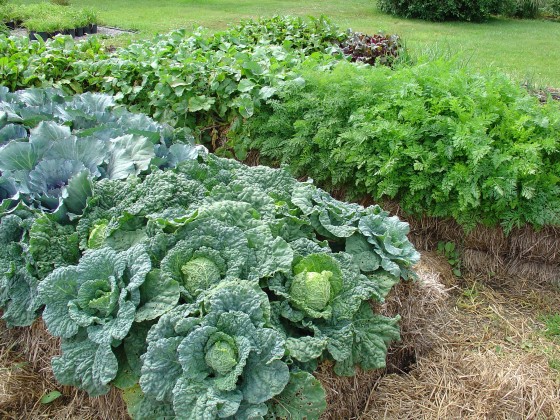

Hello-
At this years MN State Fair, I saw a straw bale garden with a CURVED WIRE TRELLIS that allowed me to walk under it and sit on a bench. WHERE CAN I BUY THE CURVED METAL TRELLIS? I’ve looked everywhere and can’t find it.
They are typically called cattle panels that can be purchased at farm and ranch stores. They are sold flat and so all you have to do is secure them one one end to get the looped trellis and then secure on the other side. They work great.